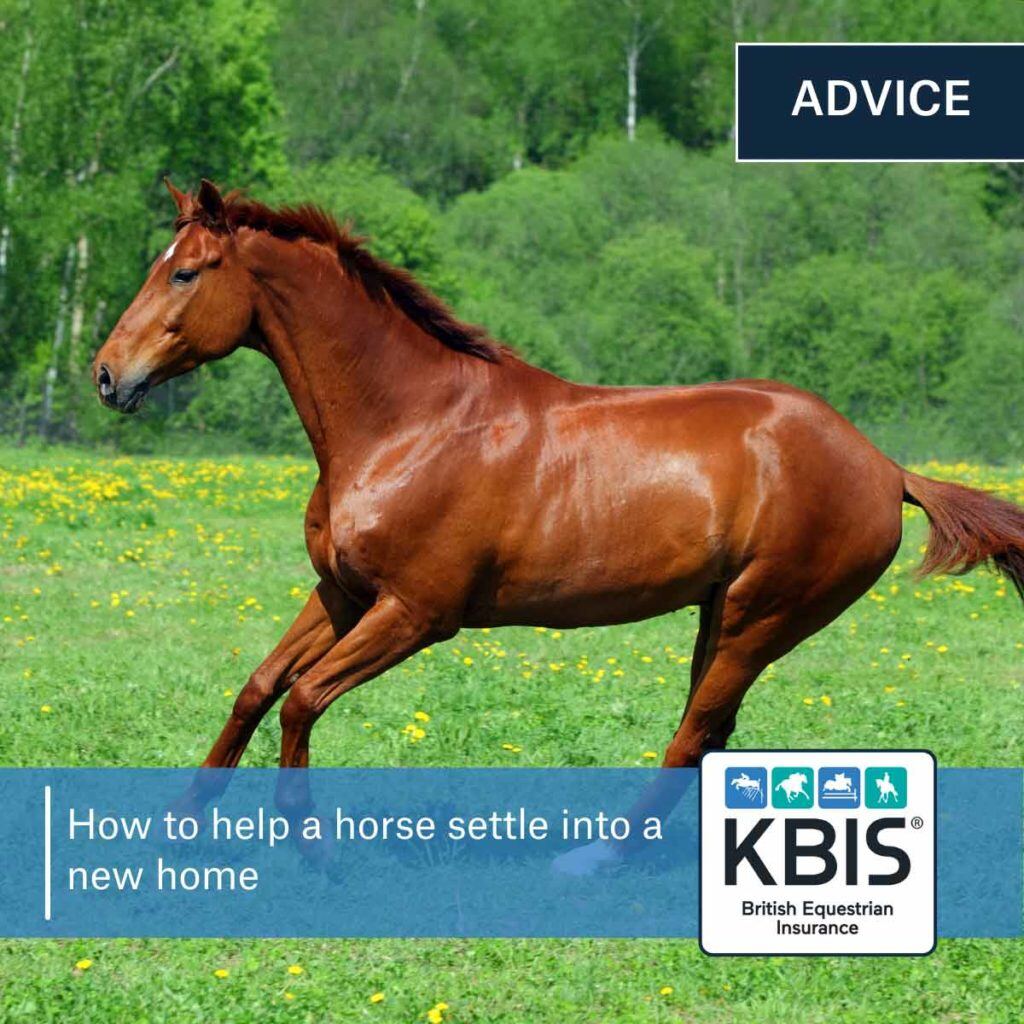Bringing your new horse home can be a hectic and stressful time, not only for you but for your new horse too.
Being placed in an unfamiliar environment can unsettle even the calmest of horses and you may find your horse displays some undesirable behaviours. Fortunately, there are certain steps you can take to minimise your horse’s distress and help him to settle into his new home quickly. Use this guide to find out how.
Prepare for your horse’s arrival
Organisation is key when moving your horse into his new home and it is helpful to have things ready for his arrival.
If you are stabling your horse, bed down the stable and have any horse licks and toys put in place (these can be a good distraction for a restless horse). Unsettled horses are likely to shuffle and roll, so to avoid them getting cast, create banks around the perimeter of the stable.
If your horse will be out in the field, double-check all of the fencing is safe and secure and that any companions and neighbours are where they should be. Knowing your horse’s previous routine can help speed up the time it takes to settle him into his new environment. It will also help you to decide where is best to place him on arrival, so find out as much information as possible from the person you’re buying the horse from.
Finally, have equipment such as grooming kits and head collars ready. To reduce the risk of spreading disease, ensure that any equipment used on existing horses has been thoroughly cleaned.
KBIS event rider Sasha Hargreaves added, “be ready to quarantine the new horses. This is vital for my yard to keep all the horses happy and healthy, and the business running normally. Not only would a virus such as equine flu put the horses in the yard at immediate risk, but the implications of then shutting down the yard to contain the virus can be extremely costly to the welfare of the horses and employee happiness.”
Prepare for all scenarios
Despite vetting and time spent with your horse before the big move, you can never be sure how he will act in new surroundings. Horses are flight animals and being placed in an unknown environment can trigger a natural instinct to run away – even the calmest of horses may fret after being placed in unfamiliar settings.
To avoid this, put your horse into a stable or a small paddock to begin with if possible. This will give you time to build trust with your horse and give him a few days to adapt to the new environment. This is a time where your horse will likely test you – in a larger field, you may find yourself chasing after him more than bonding with him!
Ensure you have a horse insurance policy in place from the moment you have an insurable interest in the horse. Why? It will cover any accidental, external injuries the horse sustains, which can be quite likely when they’re running around getting their bearings. Plus, the sooner you start the policy, the sooner full cover will be in place as outlined in our ‘When is best to insure?‘ article.
Avoid changing feed
Ask your horse’s previous owner about his existing feeding regime. How much would he be eating throughout the day? What were the brands of the food given? In what quantities? Once you have gathered this information, stock up on a few bags of this ready for your horse’s arrival. The familiarity can help to ease any anxiety your horse may be feeling.
Avoid changing your horse’s feed, but if you have to, do it gradually to minimise the risk of digestive upset. Horses can have quite sensitive stomachs and changing their food too quickly has been linked to health issues such as colic and laminitis. It can also have a negative effect on their overall well-being.
Likewise, if you plan to change the type of hay you will give to your new horse, do this slowly to be on the safe side. This applies especially when changing from grass to legume.
Monitor water-intake
Ensure your horse has access to plenty of clean and fresh water and if your horse isn’t accustomed to a free-flowing water tank, use clean buckets and tubs instead.
The average horse can drink up to 50 litres of water per day, particularly in hot weather. However, they can be sensitive to the changes in pH levels and total dissolved solid (TDS) levels in unfamiliar water. This means you may find your horse turns their nose up at your drinking water. Although this is unlikely to escalate to the point of dehydration, it is a good idea to monitor him just in case.
Spend extra time with your horse
Be prepared to adapt your own routines and time scales to suit your horse.
Although it is always important to take the time to bond with your horse, it is especially true in the weeks following a move. Visit your horse regularly, gradually establish a routine and make him feel as comfortable as possible in his new home.
Likewise, use the time to set firm boundaries with your horse as you might find that he tests you initially. Observe your horse’s behaviour while out on the field or in his stable. You might find he displays some undesirable behaviours such as acting aggressively toward others, refusing to move or he may begin to ‘nip’ you. If there are any behavioural issues, either work through them yourself or engage a trainer to help.
Just remember to keep in mind that your horse may be feeling extremely anxious during this time and these behaviours will not always be a true reflection of his personality. Enjoy this period of getting to know each other and laying the foundations for a long and happy partnership.


